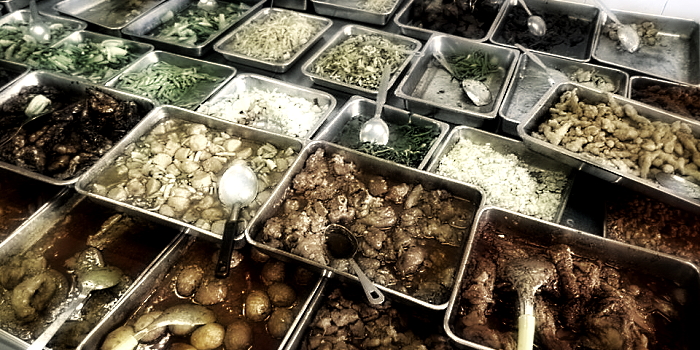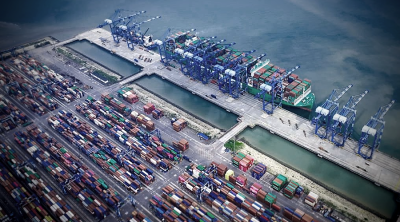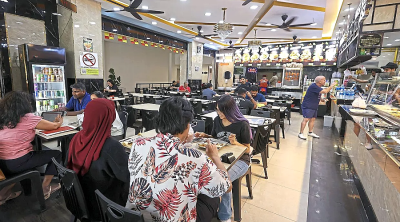Who knows, mixed rice could one day evolve into the day-to-day food for middle- to upper-income Malaysian households!
Economists in the country concur that the spiraling inflation arising from steep rises in commodity prices globally is expected to start showing its ugly face come mid-May.
As a matter of fact, for almost half a century since the 1973 oil crisis, the most “palpable” inflation to Malaysians is already knocking at our doors.
This round of globalized inflation has been sparked off by Western sanctions on Russia for starting the war against Ukraine.
Both Russia and Ukraine are major food exporters, especially Russia which is among the world’s top three exporters of oil, natural gas, coal, steel and fertilizers. A global inflation is a natural development if these vital raw materials cannot be exported to meet the robust global demands.
There is no way for Malaysia to avert this inflationary calamity for the simple reason our weak ringgit does not augur well for imports, in addition to global supply crunch of materials and food.
To make things worse, the Federal Reserve on Wednesday announced a 0.5% rate hike to stem the runaway US inflation, and this puts our ringgit under even heavier selling pressure with further devaluation of the local unit in the pipeline, and steeper goods prices, too.
Just as the ringgit’s buying capacity is drastically eroded, it is an outright bad government decision to announce an agonizing 25% rise in minimum wage to RM1,500, in hope of improving the living standard of the B40 group, which is itself not wrong.
But, to small businesses that lack competitiveness and food stalls at local hawker centers, this decision is literally killing them!
With all sorts of costs fast rising, sure enough the consumers will eventually be made to bear the additional costs.
The latest wave of price hikes has just started to move in, and businesses are not shy to tell you forthright, to your face, that they have no choice but to increase their selling prices.

The Economist has several years ago come out with the Big Mac Index to gauge the more reasonable levels of currencies based on purchasing-power parity (PPP) by measuring the amount of time a worker will need to work to earn enough to buy a Big Mac.
Here in Malaysia, perhaps we can develop our very own “Mixed Rice Index” to gauge the growth in the salaries of individual Malaysians and the price of a humble plate of mixed rice, over the last 35 years.
Almost 80% of the country’s low- to middle-income groups (B40+M40) have to patronize the many mixed rice stalls run by Malaysians from different ethnic backgrounds across the country on a daily basis to keep them fed.
Over the past few months, prices of mixed rice nationwide are no longer that affordable, and can be as dear as RM8 for a simple meal of one meat and two vegetable dishes in Klang Valley, RM5.50 to RM7 in smaller towns and rural areas. The margin of increase is approximately 15-20%.
We still remember the same plate of mixed rice in Klang Valley would not cost more than RM2 back in 1987, which means a four- to five-fold increase over a span of 35 years!
Our per capita GDP was US$1,947 in 1987, expanding to $10,400 in 2020, a 5.3 times increase.
A fresh graduate was then paid RM600 a month, and about RM2,500 to RM3,000 today, also around four or five times higher.
But the things is, prices of houses, daily necessities, electronic gadgets (including smartphones) and cars (which are indispensable, to be honest) have increased by many more times than this!
The inflationary pressure that accompanies payrises has made life a whole lot tougher today than 35 years ago for many young people.
Things that we have no way to escape such as housing mortgages (or rents), car loans, daily (non-food) expenses, etc. have squeezed our monthly paychecks to not more than RM500 which can be spent on food.
If a plate of mixed rice can go up to RM8, then we may have to fork out RM720 a month just to buy the most “affordable” mixed rice meals alone.
Very soon, some of us may no longer afford a mixed rice meal any more.
Engel’s coefficient measures the proportion of money spent on food in household expenses, and this has been used by the UN to measure the standard of living for countries. A family that spends more than 60% of household expenses on food is considered poor, while one that spends only 20-30% on food is considered affluent.
Under the weight of the smothering inflationary pressure, after setting aside budgets for basic expenditures and all kinds of mortgage commitments, a family making RM15,000 a month may actually not have much left for food!
As such, only those in T10 (not T20) are considered well-to-do. As for the remaining 90%, mixed rice could very much evolve into the day-to-day food for middle- to upper-income Malaysian households!
ADVERTISEMENT
ADVERTISEMENT


































